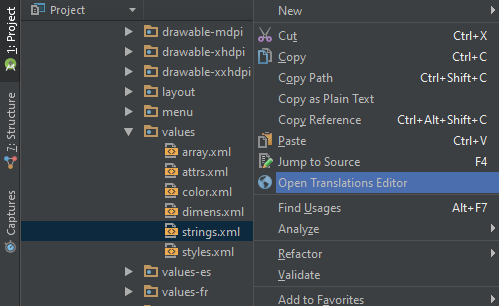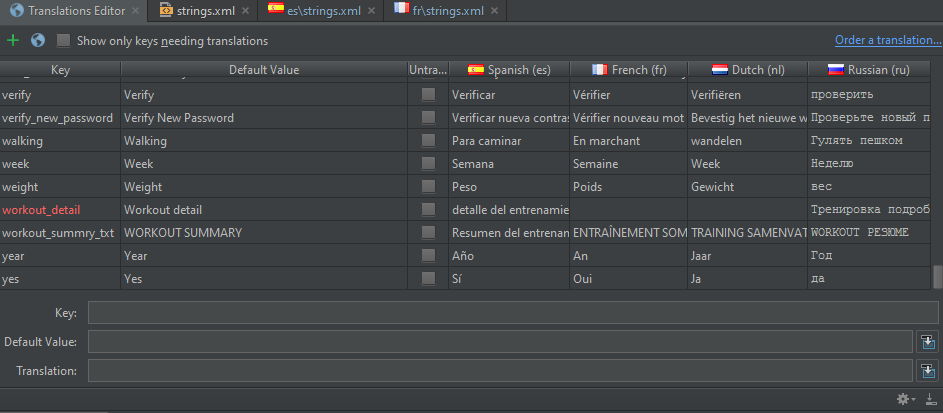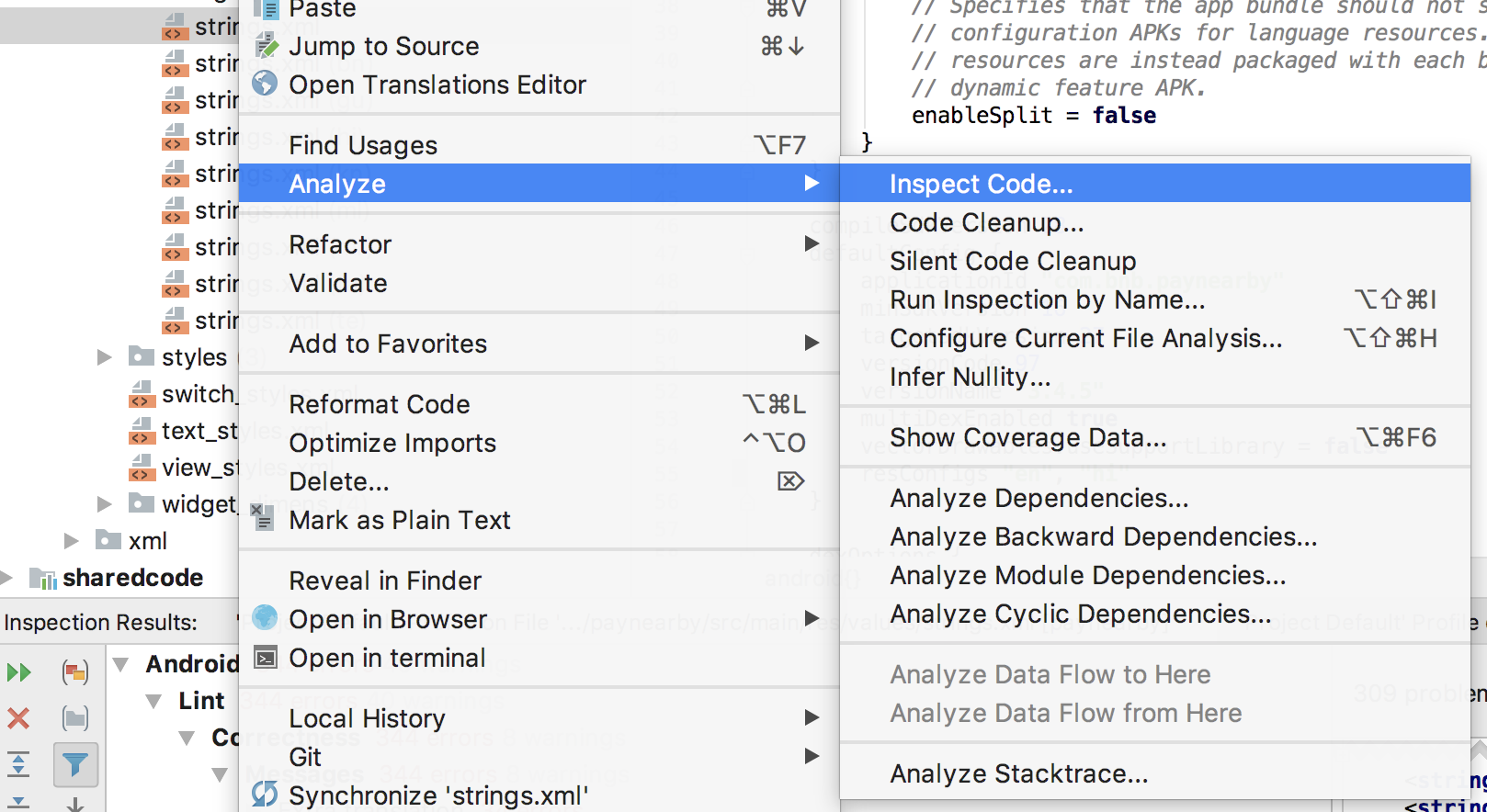In Android, you can specify the texts in the default locale in res/values/strings.xml. Additional translations can be added for new languages in res/values-it/strings.xml (for Italian for example). If a string is not translated, the fallback-default locale is used.
Currently I can not tell which strings I still need to translate (so are in values/strings.xml, but not in values-$/strings.xml for all $ in languages) and which are translated, although the are obsolte (so are in values-$/strings.xml, but not in values/strings.xml exists $ in languages)
I'm searching for a tool which gives me the translations which are missing and the one which are obsolete.
To be honest, it is not that difficult to write such a tool for the command-line, I can only hardly believe nobody has already done this.






